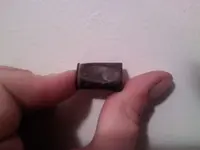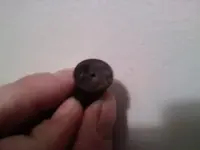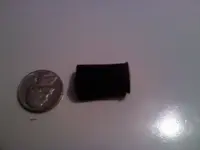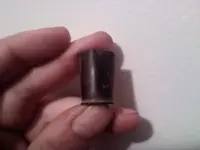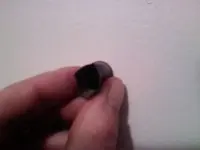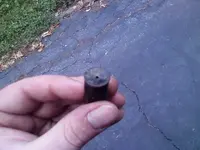Thank you for making more-accurate measurements, and the additional photos.
The object is definitely a bullet-casing. Except for the pinhole in your casing's flat base, it looks exactly like a Spencer Breechloading Rifle/Carbine cartridge's casing. (That firearm was in use from about 1862 through the first half of the Indiian Wars era, and afterwards was sold to the Civilian population as war-surplus, for use in big-game hunting.) The Spencer used a Rimfire casing, meaning the primer was contained inside the rim around the casing's base.
At the moment, I am unaware of an explanation for what appears to be a Spencer casing which has a pinhole at the center of its base. Such a pinhole was used on externally-primed metal casings, such as the Maynard, Gallagher, and Burnside -- because they did not contain a primer within them. But no Spencer-with-a-base-pinhole is shown in any of the bullet-books in my reference-library.
I used digital calipers to extra-precisely measure several excavated Spencer casings in my collection. Since your measurements are in fractions-of-an-inch length (19/32", base-diameter 9/16"), I assume you used a ruler. If you can get access to some digital calipers, please use them to re-measure your casing "extra-precisely," to see if it matches my Spencer casing measurements. For example, my "fired" Spencer casings' flat bases consistently measure .635" in diameter.
It would also be helpful to measure the diameter of your casing's cylindrical body, just above the base-rim. My fired Spencer casings consistently measure .565-.570" at that location.




